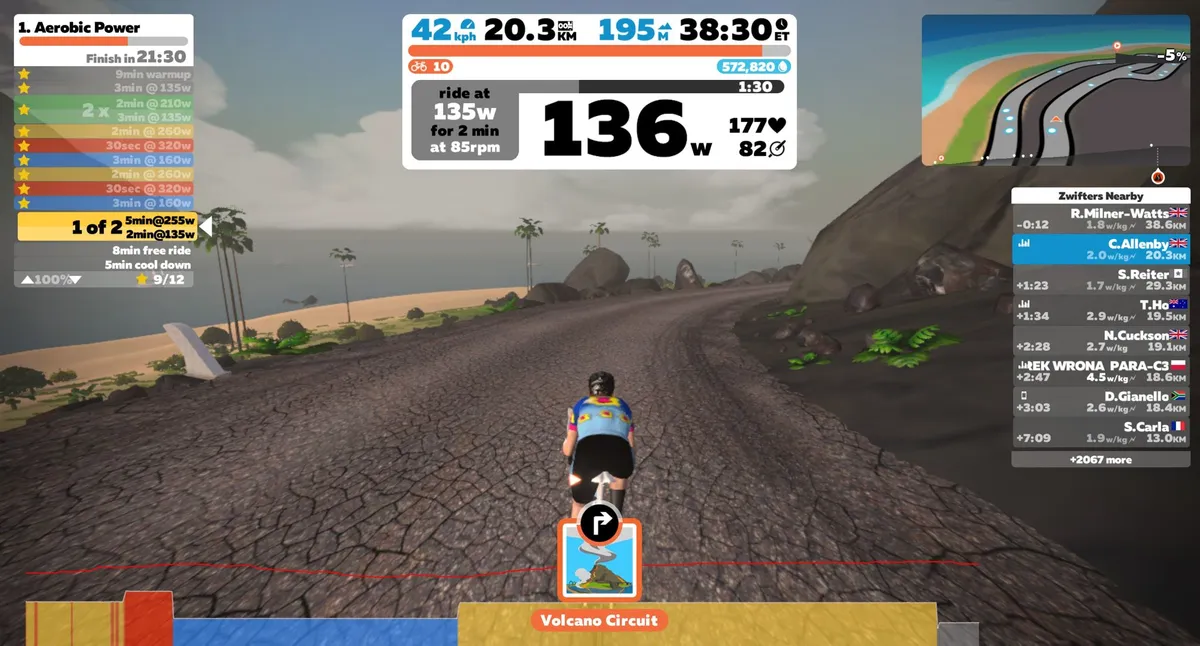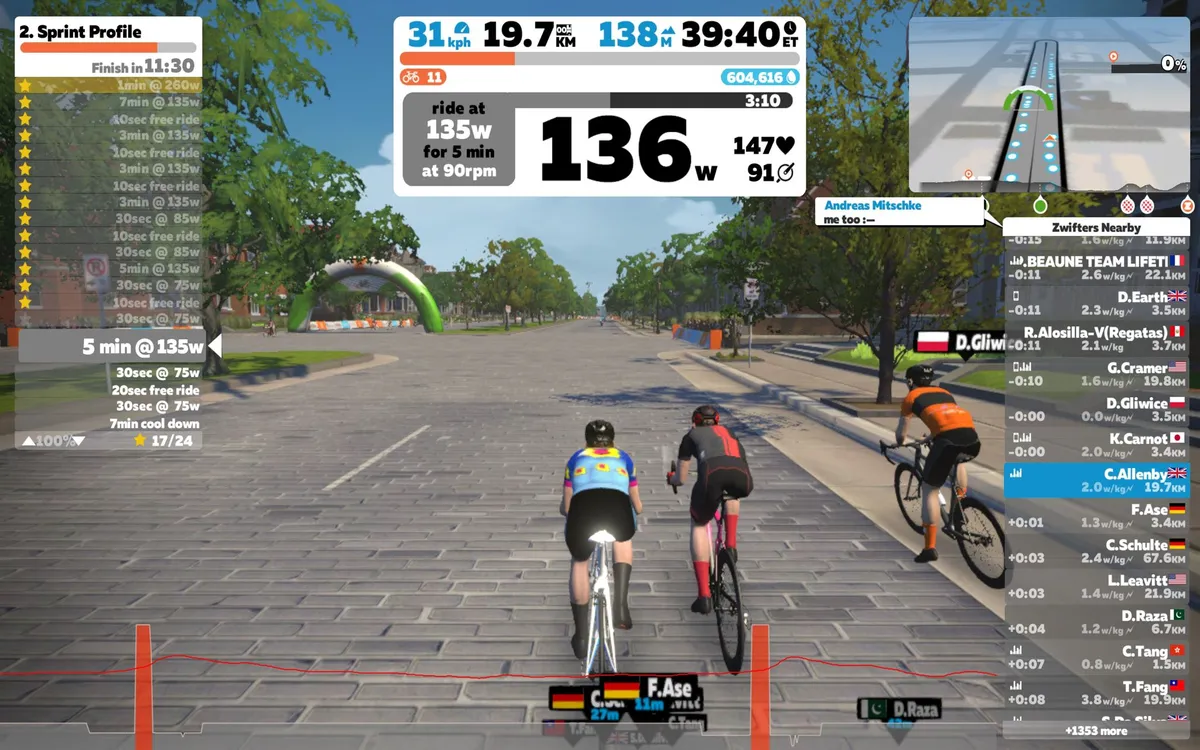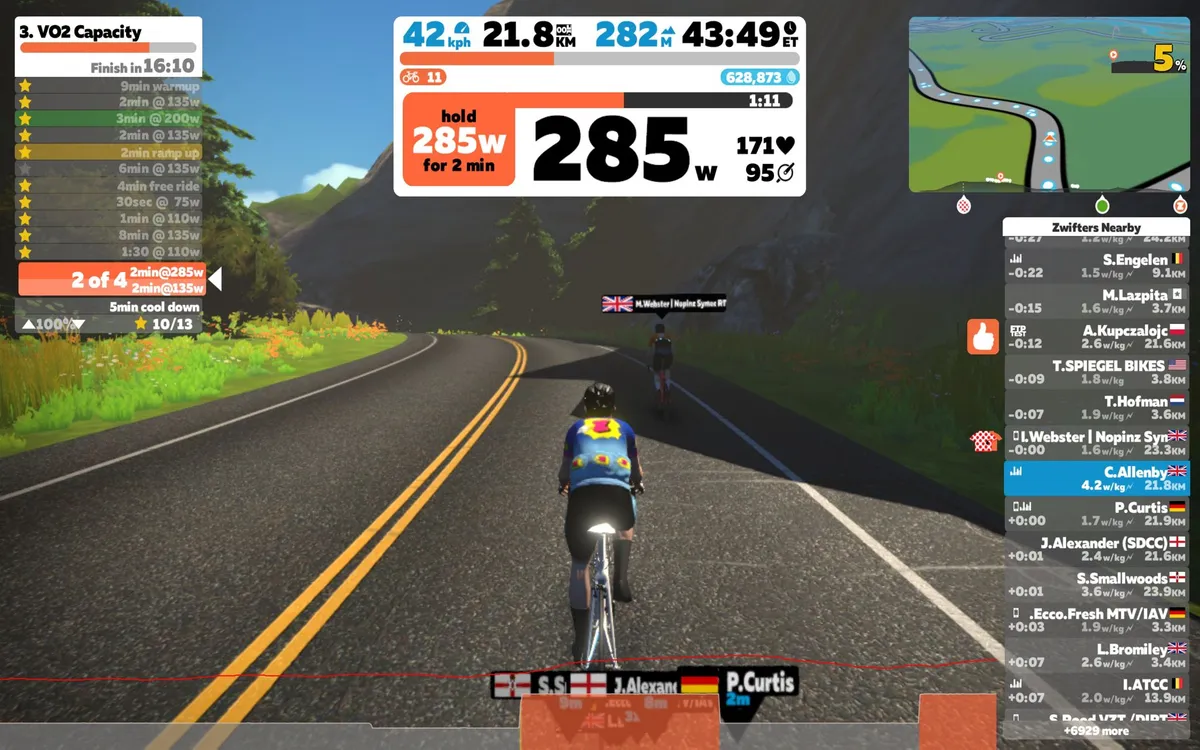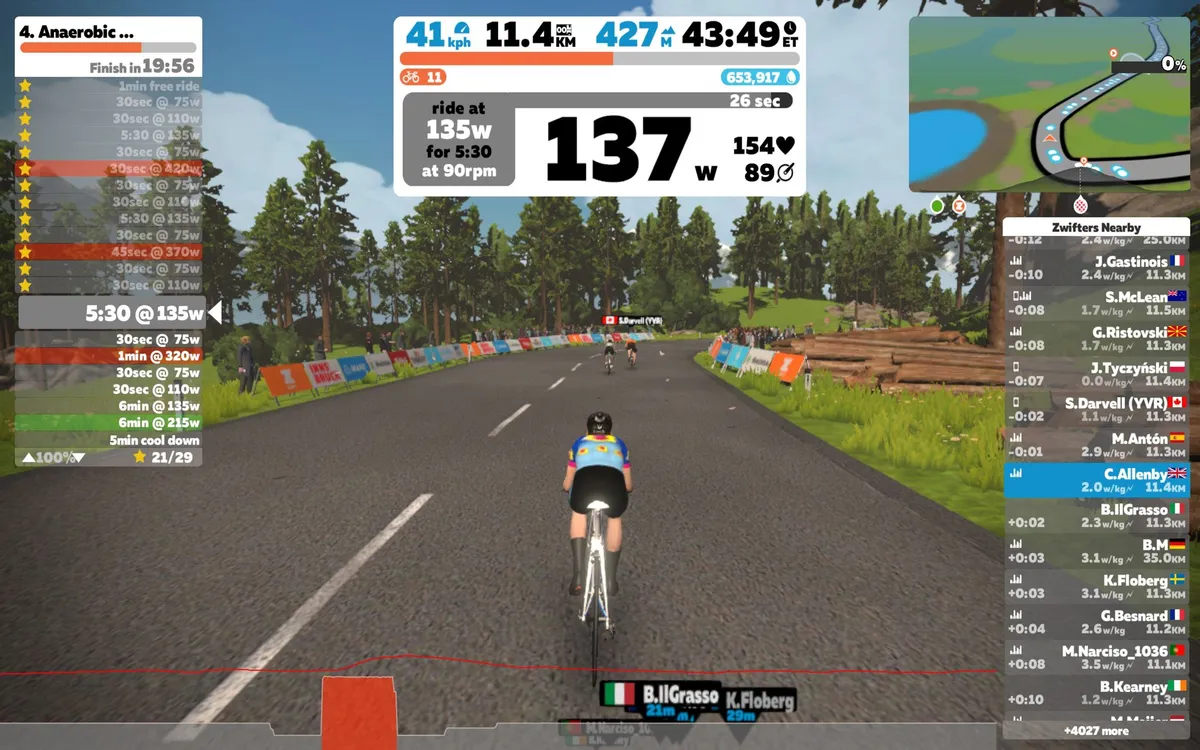Hunched over my handlebars, sweat streaming out of every possible pore, I think I’ve found the limitations of my cycling ability (and that of my fan-less pain cave). I’ve put myself through the metaphorical wringer, and have the power curve to prove it.
The reason I’ve spent October digging deep into my aerobic and anaerobic capabilities is the return of Zwift Academy. Back for a fourth year, eight-week programme on Zwift is designed to let subscribers ‘unlock’ their potential across a variety of drills, races and group rides.
And for a couple of extremely talented riders, there’s the small matter of a professional contract up for grabs with the men’s UCI ProContinental team Alpecin-Fenix and Canyon//SRAM Racing women’s WorldTour team.
Despite having no prior experience of racing, I (naively) thought I could be in with a shot of the big prize. A third of the way through the training program though, and I think I’m going to have to put my plans of summers spent racing around Europe on ice. Currently ranked 9,384th, I’ve got the mother of all mountains to climb if I want to be rubbing shoulders with Mathieu van der Poel next year.
While the pro contracts are the headline-grabbing feature of the two-month training programs, Stephen Gallagher of Dig Deep Coaching (the coaching team responsible for this year’s plan) believes that, as well as unearthing hidden gems, Zwift Academy helps everyday riders realise their strengths and weaknesses on a bike.
“We’ve looked at the Zwift Academy this year and broken it down into four particular areas that work on different energy systems [and] different intensities,” he says. “It allows you to see where you’re stronger or weaker, building your confidence up that you’re good at something, or allowing you to identify something you’re weak at for you to go and work at in the future.”
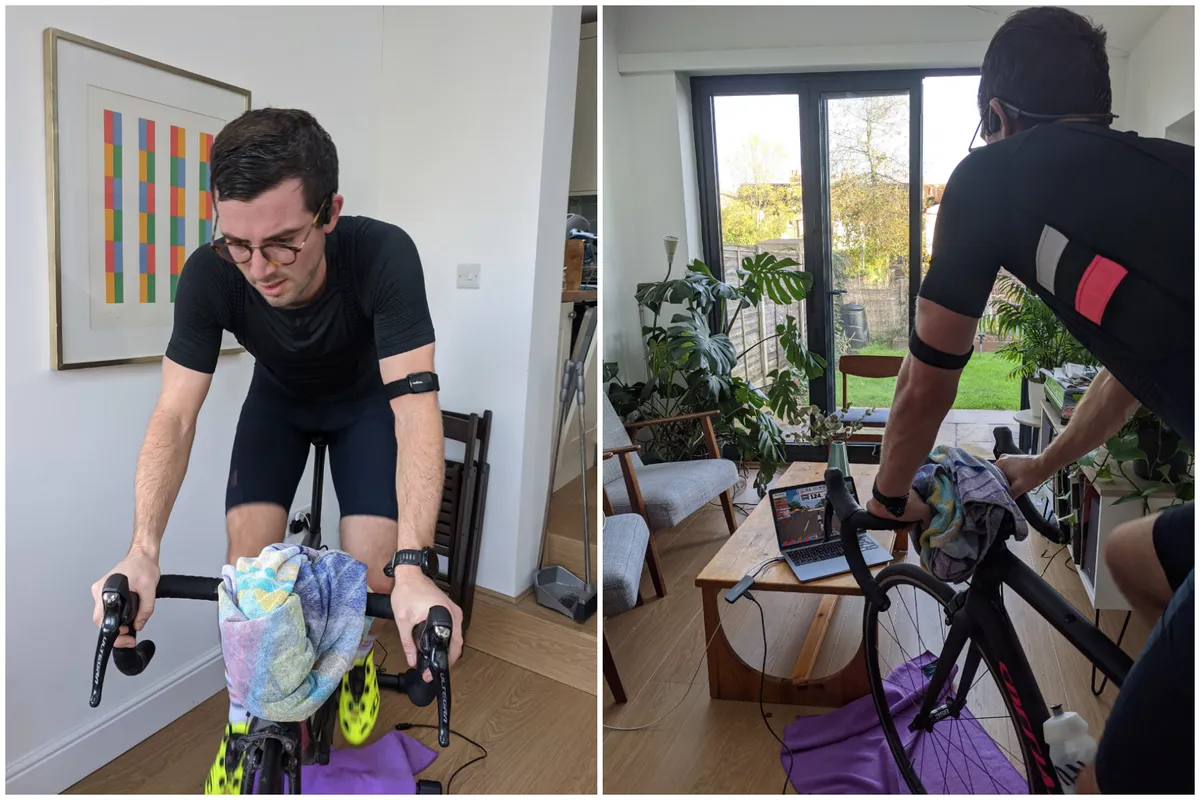
While there is now an emphasis and almost obsession with FTP, it’s only one of a number of ways to measure your abilities, according to Gallagher.
“Five to ten years ago, FTP and wattage were only understood by elite cyclists or your hardcore amateurs,” says Gallagher. “Now, because of Zwift, it’s common knowledge. Having that [FTP] number is important but there are also so many other parts of your physiology that can be strong, that potentially aren’t relevant to your FTP.”
The first four gruelling workouts in the Zwift Academy looked to delve into these “other parts” and were split into aerobic power, sprint profile, VO2 capacity and anaerobic resilience.
As well as intervals of varying severities, each sessions included a “free ride” interval where the turbo trainer’s ERG mode was turned off and the emphasis switched to going full gas (aka laying down the power before holding on once my legs started screaming).
While there were some pleasant surprises along the way (I broke through the 900-watt barrier for the first time), these sessions gave me a clearer picture of where my current strength lie (above average for anything under five minutes) and where there’s room for improvement (everything else).
What’s now coming up for me? Next on the Zwift Academy agenda are four workouts that build on these foundations, as well as two races and, new for 2020, two ‘segment rides’ – similar to Strava segments, they place your fitness and ability into the context of the ‘real world’ of Zwift.
“I would encourage people to do those segment rides after they’ve completed the first four workouts,” says Gallagher. “The workout is going to allow you to see your maximal power so whenever you go to do that segment ride, you have a benchmark to work from and a pacing strategy.”

Other tips include remembering to fuel properly before each training session, particularly the aerobic workouts (well, that’s my autumn grazing excuse sorted), and to have your threshold set up as accurately as possible for the workouts (Zwift has an FTP test as one its workouts).
“The majority of people have it [FTP] set too high,” adds Gallagher. ““If you're not certain about [your FTP], lower it by a couple of per cent.”
With his recommendations on pre-workout carb-loading, watt benchmarking and pacing strategies ringing in my ears, it’s time to tackle the next third of the training plan – and see if I can haul myself back up the leaderboard.
